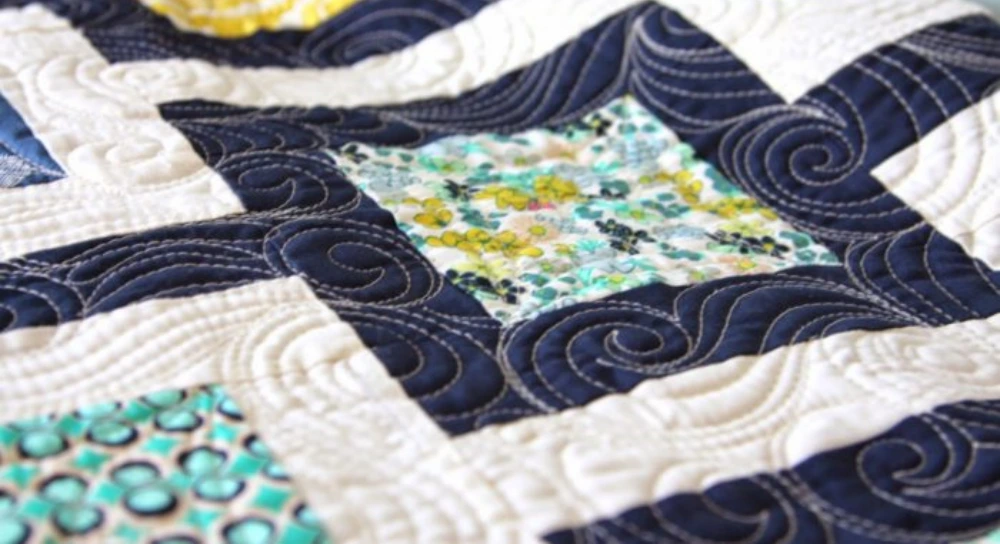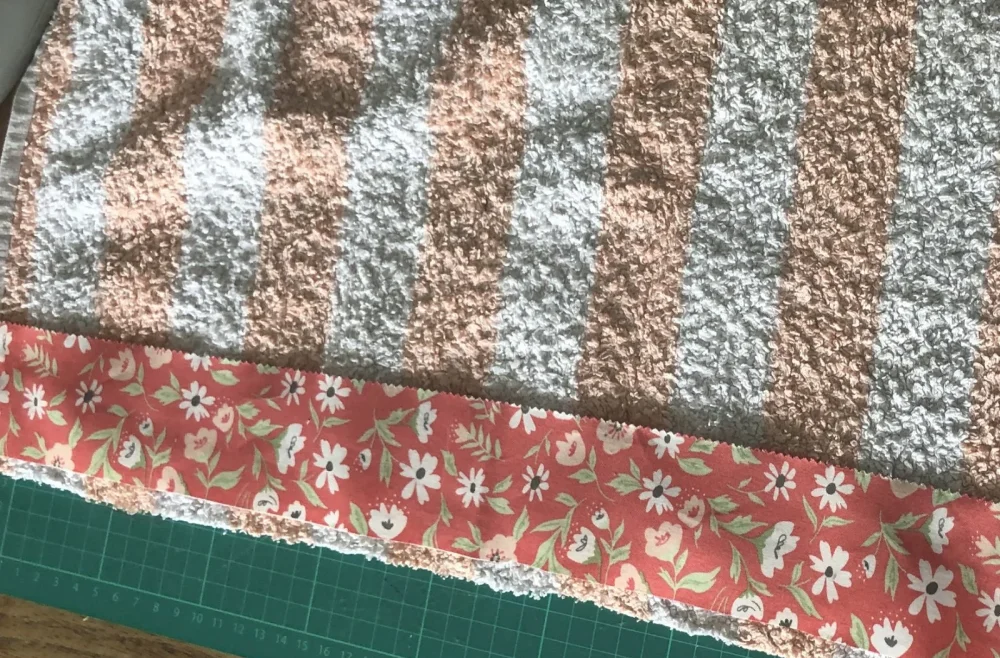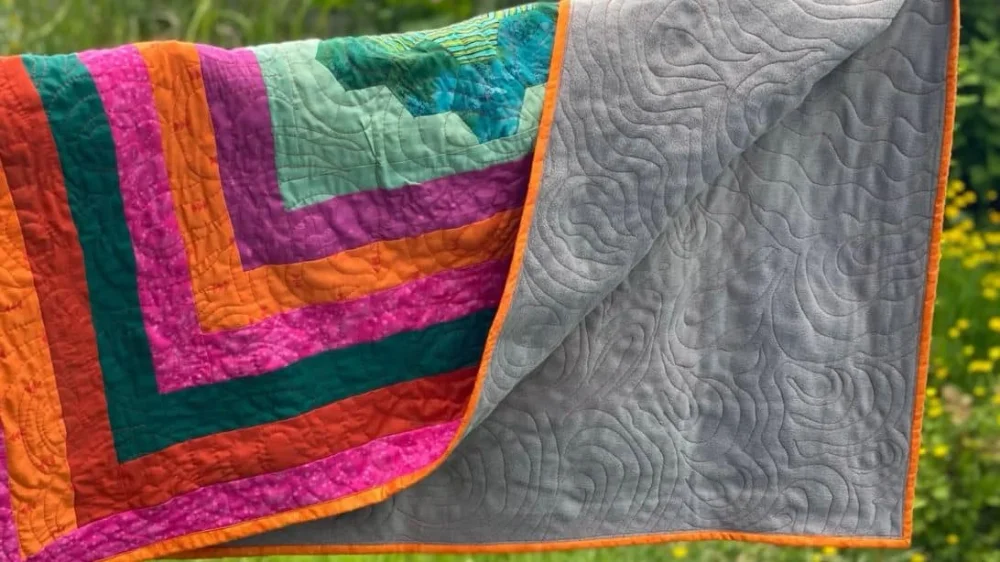Yes, you can find many quilt batting alternatives that are both budget-friendly and eco-conscious. You might be surprised to learn that 62% of quilting enthusiasts actually prefer eco-friendly materials, so you are not alone if you want to try a new alternative.
Many quilters use thrifted or recycled materials for their projects.
Eco-conscious quilt batting alternatives remain a popular choice for detail-oriented quilters.
You do not have to sacrifice comfort and warmth when you try these options. If you want a premium, friendly option, check out Fanda Fabrics for top-quality quilt batting.
Key Takeaways
You can save money and help the environment by using recycled materials like old towels, flannel sheets, and blankets as quilt batting.
Alternative batting options like bamboo and cotton offer softness, breathability, and eco-friendly benefits without sacrificing comfort.
Joining leftover batting scraps reduces waste and stretches your quilting supplies for more projects.
Skipping batting works well for lightweight summer quilts and decorative pieces, keeping quilts cool and easy to handle.
Fanda Fabrics provides affordable, sustainable batting choices that support quality quilting and eco-conscious values.
Why Choose Quilt Batting Alternatives?

Cost and Sustainability
You might wonder why so many quilters look for quilt batting alternatives. Saving money is a big reason. Standard batting can get expensive, especially if you make large quilts or work on several projects each year.
You can find cost-effective options by using old towels, flannel sheets, or even batting scraps from previous quilts. These alternative batting choices often come from second-hand sources, so you spend less and waste less.
Many quilters care about the environment. You can help reduce waste by upcycling old cotton blankets or flannel shirts. Bamboo batting is another environmentally friendly choice. Bamboo grows quickly, uses less water, and breaks down naturally.
Organic cotton batting skips harmful chemicals and pesticides, making it safer for you and the planet. When you choose alternative batting, you support conservation and reuse, which are important values in quilting.
Tip: Try asking friends or family for unused sheets or towels. You might be surprised by what you can repurpose for your next quilt!
Fanda Fabrics shares your commitment to eco-friendly materials. Their bamboo and cotton batting options offer both quality and sustainability, so you can feel good about your choices.
Tradition and Creativity
Quilting has always been about resourcefulness. You can honor tradition by using fabric scraps, old clothing, or pieced batting. These alternative methods let you express your creativity and make each quilt unique.
Some quilters skip batting altogether for summer quilts or decorative wall hangings. This keeps the quilt lightweight and gives it a crisp, flat look.
Alternative batting can also make sewing easier. Thinner layers mean less bulk, so you can finish projects faster. You might enjoy experimenting with different textures, like fleece or foam, to create special effects. Every time you choose an alternative, you add a personal touch to your work.
If you want a friendly supplier for sustainable materials, Fanda Fabrics offers a wide range of options. Their dedication to quality helps you create beautiful, long-lasting quilts while supporting environmentally responsible practices.
Low-Cost Quilt Batting Alternatives
Looking for ways to save money on your next quilt? You have plenty of low-cost quilt batting alternatives that work well for both beginners and experienced quilters. Let’s explore some of the most popular options and see how you can reuse everyday items to create beautiful, cozy quilts.
Old Towels

You probably have a few old towels tucked away in your linen closet. Using old towels as batting is a classic trick that many quilters love. You can find them at home, ask friends, or check local thrift stores. Before you use them, remove any thick edges or embroidery. This helps your quilt lie flat and makes sewing easier.
Old towels add a nice weight and warmth to your quilt. They work best for utility quilts, picnic blankets, or pet beds. The texture is a bit heavier than commercial batting, so your quilt will feel sturdy. If you want a lightweight quilt, you might want to use thinner towels or layer with another material.
Tip: Wash and dry towels before using them. This prevents shrinkage and removes any lingering odors.
Flannel and Cotton Sheets
Flannel and cotton sheets are another great alternative to batting. You can find affordable flannel sheets at stores like Target or at thrift shops. Large sheets, like queen or king size, give you enough material for two quilt backings or batting layers, which saves you money.
When using flannel sheets for batting, always prewash and dry them to avoid shrinking or color bleeding later.
Flannel batting creates quilts that are flatter and a bit heavier. You won’t get the same puffiness or loft as with commercial batting, but you will enjoy a warm, drapey quilt. Flannel works well for lightweight or summer quilts, table runners, and placemats.
Cotton sheets are less common but can be used if you want a smooth, thin layer inside your quilt.
Flannel batting gives a flat, less puffy finish.
It’s warm and perfect for lightweight quilts.
Quilting patterns may not show up as much as with commercial batting.
If you want a more consistent loft and professional finish, you might consider Fanda Fabrics’ Cotton Quilt Batting or Bamboo Quilt Batting. These premium options offer breathability, softness, and durability, making them ideal for heirloom quilts.
Fleece Blankets

Fleece blankets are easy to find and make a cozy, affordable batting substitute. You can reuse old fleece throws or buy inexpensive ones from discount stores. Before you use fleece, wash and dry it to prevent shrinkage.
Lay it out flat, check for wrinkles, and cut it to size, leaving an extra inch for seam allowance if you need to piece sections together.
When pressing seams, always test your iron on a scrap first. Fleece can melt if the iron is too hot, so use a protective layer like parchment paper or a muslin cloth. Open seams and press gently to keep everything flat. You can also use fusible batting tape for extra stability.
Fleece adds warmth and softness to your quilt. It’s lightweight, making it perfect for throws and baby quilts. The finished quilt will feel plush and cuddly, but it may not have the same structure as traditional batting.
Old Blankets and Quilts
Using old blankets as batting is a time-honored tradition. Many quilters have discovered that their grandmothers used whatever they had on hand, including old quilts or even newspapers. When using old blankets as batting, check for cleanliness and avoid materials that might break down over time, like paper.
Old blankets provide excellent warmth and structure. They are thick and self-contained, so you don’t need as many quilting stitches to hold everything together. The finished quilt will feel substantial and may have a unique texture, depending on the blanket’s material.
Recycled materials like old blankets, shirts, or even denim add character and history to your quilt. You get a mix of textures and colors, which can make your quilt truly one-of-a-kind. These quilts often carry personal stories and become cherished heirlooms.
Note: Embrace imperfections when you use recycled materials. The mix of fabrics and textures gives your quilt a modern, organic look.
If you want the benefits of natural fibers with a more predictable finish, Fanda Fabrics’ Cotton Quilt Batting and Bamboo Quilt Batting are excellent choices. They offer softness, breathability, and a lightweight feel, perfect for both traditional and modern quilting projects.
You have many low-cost quilt batting alternatives to choose from. Whether you enjoy using old towels as batting, using flannel sheets for batting, or using old blankets as batting, you can create beautiful, lightweight quilts that reflect your creativity and values.
If you want a premium, eco-friendly option, Fanda Fabrics’ Cotton and Bamboo Quilt Batting delivers consistent quality and comfort for every project.
Piecing Batting Scraps
Do you have a pile of leftover batting pieces from past projects? You can turn those scraps into something useful by joining batting scraps together. This method saves money and helps you reduce waste in your quilting routine.
Joining Methods
You can join batting scraps in a few simple ways. Here are some tried-and-true methods:
Place two batting pieces with the same side facing up. Overlap them by about half an inch.
Use a rotary cutter and ruler to trim through the overlap. This gives you clean, matching edges.
For cotton or cotton/poly blends, use your sewing machine’s wide, long zigzag stitch. Align the edges so they touch but don’t overlap. A walking foot helps keep everything even.
If you have high-loft batting like wool, hand whipstitching works best. Use a matching thread and keep your stitches loose to avoid pulling.
Fusible batting tape is another option for cotton batting. Lay the tape over the seam and press gently with an iron. Don’t press too hard—this keeps the batting fluffy.
Tip: Always test your stitch settings on a scrap first. You want a secure seam that stays flat and doesn’t pucker.
Avoid overlapping the batting or using a narrow zigzag. This can create lumps that show through your quilt. When you finish, your joined batting will look smooth and feel almost seamless inside your quilt.
Zero Waste Quilting
Piecing batting scraps is a great way to practice zero-waste quilting. Instead of tossing those odd-shaped leftovers, you can sew or fuse them into larger sections.
The quilting stitches will hold everything in place, so you don’t need to worry about making the seams extra strong. This approach lets you use every bit of batting, which means less waste and more savings.
Many quilters also save small strips for stuffing or donate tiny pieces for pet beds. By reusing and upcycling, you help the environment and get the most out of your materials.
If you often work on large projects or want consistent quality, Fanda Fabrics’ Bulk Quilt Batting is a smart choice. You get plenty of batting in one package, so you can cut what you need and save the rest for future quilts. This makes your quilting process smoother and more efficient.
Quilt Without Batting
When to Skip Batting
You might wonder when it makes sense to make a quilt without batting. If you live in a warm climate or want a summer quilt, skipping the batting layer is a smart choice. You get a lightweight quilt that feels cool and comfortable, perfect for hot nights or humid weather.
Many quilters also choose this method for bedspreads, picnic blankets, or decorative throws. You can sew the quilt top and backing together using the pillow method, then turn it right side out and finish the edges. This technique keeps your quilt thin and easy to handle.
Tip: Try using flannel sheets or quilting cotton as your backing. These materials add a bit of softness without extra bulk.
Techniques for Structure
You might worry that a quilt without batting will feel flimsy. You can add structure by using sturdy fabrics for the top and back. Tying the quilt or topstitching helps hold the layers together.
Some quilters use a soft flannel backing to give a little extra weight. If you want a bit more loft but still prefer a lightweight feel, you can look at Fanda Fabrics’ lightweight batting options. These products offer minimal loft, so your quilt stays easy to fold and carry.
Use the pillow sewing method for a neat edge.
Try topstitching or tying to keep layers secure.
Choose backing fabrics with a little thickness for more stability.
Comfort and Appearance
Quilts without batting look and feel different from traditional quilts. You get a thin, flat finish that works well for warm weather. The quilting patterns appear less pronounced, so your design looks subtle and modern. If you want more texture or warmth, cotton or polyester batting adds dimension and coziness. Here’s a quick comparison:
Quilt Type | Appearance Characteristics | Effect on Quilting Patterns |
|---|---|---|
Quilt without batting | Light, thin, flat, less poofy | Patterns less pronounced |
With lightweight batting | Thin, soft, breathable | Patterns are subtle, softer drape |
With polyester batting | Puffy, thick, heavy | Patterns emphasized, more depth |
You can choose the style that fits your needs. If you want a lightweight quilt for summer, skipping batting is a great option. For a little more comfort, Fanda Fabrics’ lightweight batting gives you just enough loft without making your quilt heavy.
Budget-Friendly Quilt Batting Alternatives from Fanda Fabrics
Are you searching for quilt batting alternatives that are both lightweight and environmentally responsible? Fanda Fabrics offers a range of budget-friendly quilt batting alternatives that suit every quilter’s needs.
You can choose from bamboo, cotton, or bulk options, each designed to help you create beautiful, cozy quilts without breaking the bank.
Bamboo Quilt Batting
Bamboo quilt batting stands out as a top alternative for eco-conscious quilters. You get a lightweight material made from natural bamboo pulp, sometimes blended with cotton or polyester for extra durability. Bamboo batting is environmentally friendly and supports sustainable production.
You’ll notice how breathable it feels, making it perfect for summer quilts or anyone who prefers a lightweight finish. Bamboo’s natural anti-bacterial properties make it a safe choice for baby quilts and sensitive skin. You can wash it in the machine, and it stays soft after many washes.
This alternative batting is a smart pick if you want comfort, easy care, and a gentle touch.
Learn more about Bamboo Quilt Batting
Tip: Bamboo batting works well for lightweight throws and quilts you use year-round.
Cotton Quilt Batting
Cotton quilt batting is a classic lightweight option that gives you warmth without extra bulk. You’ll love how soft and breathable it feels. Cotton batting is available in different thicknesses, so you can pick the loft that matches your project. It’s easy to sew, and it becomes even softer after each wash.
If you want an alternative that’s natural and environmentally friendly, cotton batting is a great choice. You can use it for traditional quilts, modern designs, or anything in between.
Explore Cotton Quilt Batting
Bulk Quilt Batting
Do you work on large projects or want to save money? Bulk quilt batting from Fanda Fabrics gives you a cost-effective solution. You can order customizable sizes and thicknesses, so you always get the right fit for your quilt.
Bulk batting comes in a variety of materials, including cotton, polyester, and blends. You’ll find it easy to store, and it lasts a long time, so you can stock up for future projects. The quality stays consistent, and you get reliable delivery every time.
See Bulk Quilt Batting Options
Bulk batting is perfect for lightweight quilts, thick comforters, or anything in between.
You save money and reduce waste by buying in bulk.
If you want quilt batting alternatives that are lightweight, environmentally responsible, and easy to use, Fanda Fabrics has you covered. You can find the perfect alternative for every project, whether you need a lightweight summer quilt or a cozy winter blanket.
Extra Tips for Saving Money
Sourcing Fabric
You want to keep your quilting budget in check, right? There are plenty of ways to find cost-effective options for your next project. You can start by looking for fleece sheets or blankets at department stores. These are lightweight, come in many colors, and work well as batting alternatives.
Pre-wash fleece before you cut it to avoid shrinkage later.
If you prefer cotton, try using 100% cotton sheets. You can buy them new or pick up second-hand ones at thrift shops. Neutral colors work best because patterns might show through your quilt top. Always pre-wash cotton sheets to prevent fraying and shrinking.
Here are some smart strategies to save money on fabric:
Avoid buying precut fabrics. You can make your own precuts and stretch your budget.
Buy batting in bulk rolls if you have space. This lowers the cost per project.
Watch for sales and use coupons at fabric stores.
Save and re-use batting scraps for small quilts or join them for larger projects.
Use leftover batting scraps for cleaning around the house.
Shop wholesale or online for fabric. You get access to more designs and better prices.
Check shipping policies and minimum order requirements before buying in bulk.
Inspect fabric samples before making a big purchase.
Fanda Fabrics offers affordable, customizable fabric options. You can order small batches or buy in bulk, making it easy to match your project needs and budget.
Tip: Thrift stores, garage sales, and Freecycle groups are great places to find fabric and batting alternatives for little or no money.
Creative Backing Ideas
You don’t have to spend a lot on quilt backing. You can get creative and use what you already have. Try piecing together leftover fabric scraps or stash fabrics to make a unique backing. Patchwork designs let you use extra charm squares or precuts, making the back of your quilt just as interesting as the front.
Here are some ideas to help you save:
Add extra quilt blocks to the backing. This ties the front and back together and uses up leftover fabric.
Sew accent strips from scrap fabric onto large background pieces for a simple, cost-effective backing.
Use fleece as backing. It’s cheaper than quilting cotton, easy to sew, and adds warmth.
Repurpose another quilt top as backing. You get a double-sided quilt and finish two projects at once.
Combine leftover fabric pieces, fat quarters, and jelly roll strips for a stashbuster backing.
Coordinate colors and sizes when piecing backing to keep your quilt looking neat.
Many quilters make entire quilts from recycled materials, including batting from old blankets or comforters. You can reuse mattress pads, sheets, and fabric remnants for batting. These items often come free or at a low cost, and they’ve usually been washed many times, so shrinkage isn’t a problem.
Note: Creative backing designs let you use up leftover fabric and add a second design to your quilt without extra cost.
Conclusion
Choosing budget-friendly and eco-friendly quilt batting alternatives brings you long-term savings, durability, and a lighter impact on the planet. Many quilters love how recycled and natural materials—like cotton, bamboo, and wool—offer warmth, softness, and lasting quality.
You can experiment with thrifted finds or premium options from Fanda Fabrics. No matter your choice, you’ll discover that comfort, creativity, and sustainability all fit perfectly into your next quilt.
FAQ
Can you use old clothes as quilt batting?
Yes, you can use old clothes like T-shirts or flannel shirts. Cut them into flat pieces and layer them inside your quilt. You get a cozy feel and save money. Wash everything first to avoid shrinkage.
How do you keep batting from shifting inside a quilt?
You can quilt closely spaced lines or use ties. Stitch through all layers to hold batting in place. Try using a walking foot for even stitches. This keeps your quilt smooth and prevents bunching.
What is the best batting for summer quilts?
Lightweight cotton or bamboo batting works best for summer quilts. You get breathability and comfort without extra warmth. You can also skip batting for an ultra-light quilt. Fanda Fabrics offers great lightweight options.
Can you mix different types of batting in one quilt?
Yes, you can mix batting types. Combine cotton and bamboo for softness and durability. Make sure the thickness matches so your quilt stays even. Mixing batting lets you use up scraps and experiment with texture.
Do you need to prewash batting before quilting?
Prewashing batting helps prevent shrinkage and removes chemicals. You should check the label first. Cotton and bamboo batting often shrink a little. Prewash if you want a smooth, finished quilt.
